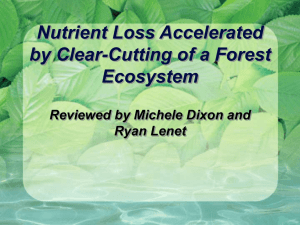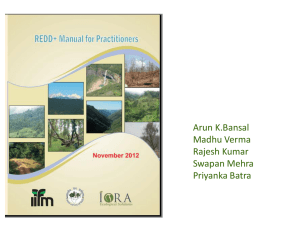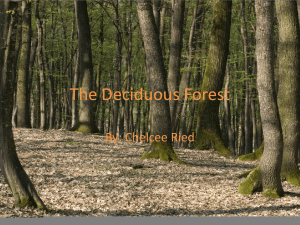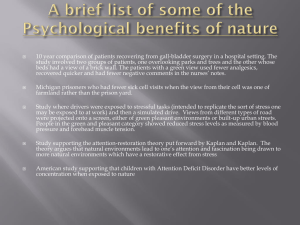(Dyera Lowii).
advertisement
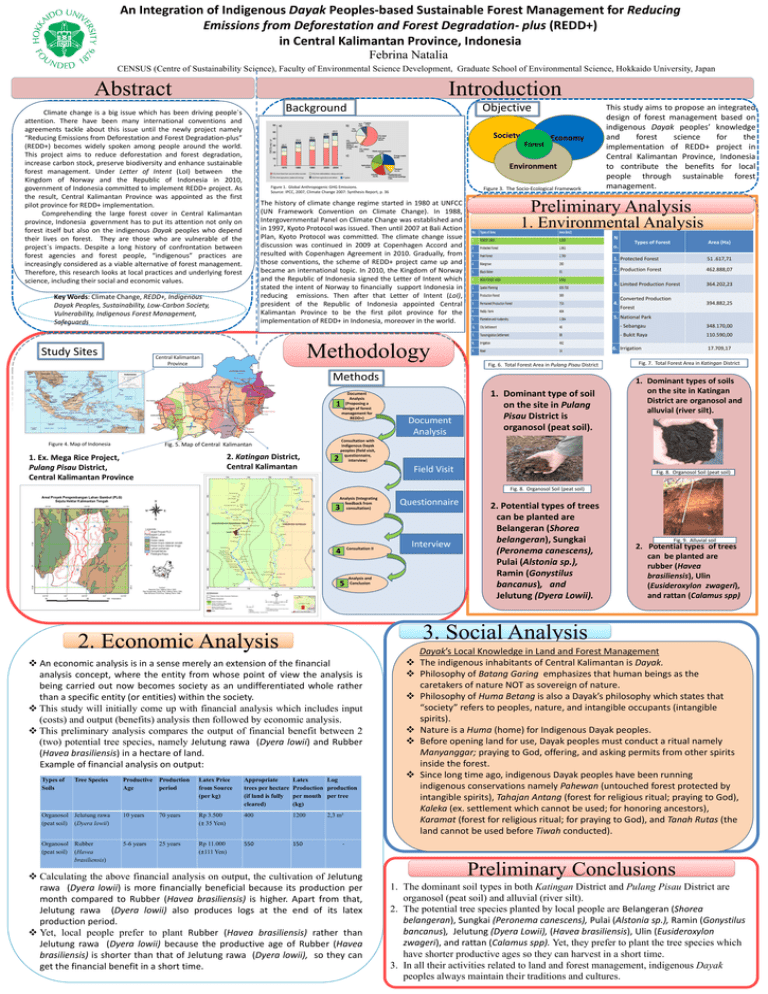
An Integration of Indigenous Dayak Peoples-based Sustainable Forest Management for Reducing Emissions from Deforestation and Forest Degradation- plus (REDD+) in Central Kalimantan Province, Indonesia Febrina Natalia CENSUS (Centre of Sustainability Science), Faculty of Environmental Science Development, Graduate School of Environmental Science, Hokkaido University, Japan Abstract Introduction Climate change is a big issue which has been driving people`s attention. There have been many international conventions and agreements tackle about this issue until the newly project namely “Reducing Emissions from Deforestation and Forest Degradation-plus” (REDD+) becomes widely spoken among people around the world. This project aims to reduce deforestation and forest degradation, increase carbon stock, preserve biodiversity and enhance sustainable forest management. Under Letter of Intent (LoI) between the Kingdom of Norway and the Republic of Indonesia in 2010, government of Indonesia committed to implement REDD+ project. As the result, Central Kalimantan Province was appointed as the first pilot province for REDD+ implementation. Comprehending the large forest cover in Central Kalimantan province, Indonesia government has to put its attention not only on forest itself but also on the indigenous Dayak peoples who depend their lives on forest. They are those who are vulnerable of the project`s impacts. Despite a long history of confrontation between forest agencies and forest people, “indigenous” practices are increasingly considered as a viable alternative of forest management. Therefore, this research looks at local practices and underlying forest science, including their social and economic values. Society Forest Economy Environment Figure 1. Global Anthropogenic GHG Emissions. Source: IPCC, 2007, Climate Change 2007: Synthesis Report, p. 36 Figure 3. The Socio-Ecological Framework 1. Environmental Analysis N o. Figure 4. Map of Indonesia 2. Katingan District, Central Kalimantan ProvinceProvince 2. Production Forest 462.888,07 3. Limited Production Forest 364.202,23 Converted Production 394.882,25 Forest - Sebangau 348.170,00 - Bukit Raya 110.590,00 Document Analysis 1. Dominant type of soil on the site in Pulang Pisau District is organosol (peat soil). 17.709,17 Fig. 7. Total Forest Area in Katingan District 1. Dominant types of soils on the site in Katingan District are organosol and alluvial (river silt). Consultation with indigenous Dayak peoples (field visit, questionnaire, interview) Fig. 5. Map of Central Kalimantan 1. Ex. Mega Rice Project, Pulang Pisau District, Central Kalimantan Province 51 .617,71 6. Irrigation Methods 1 Area (Ha) 5. National Park Fig. 6. Total Forest Area in Pulang Pisau District Document Analysis (Proposing a design of forest management for REDD+) Types of Forest 1. Protected Forest 4. Methodology Central Kalimantan Province This study aims to propose an integrated design of forest management based on indigenous Dayak peoples’ knowledge and forest science for the implementation of REDD+ project in Central Kalimantan Province, Indonesia to contribute the benefits for local people through sustainable forest management. Preliminary Analysis The history of climate change regime started in 1980 at UNFCC (UN Framework Convention on Climate Change). In 1988, Intergovernmental Panel on Climate Change was established and in 1997, Kyoto Protocol was issued. Then until 2007 at Bali Action Plan, Kyoto Protocol was committed. The climate change issue discussion was continued in 2009 at Copenhagen Accord and resulted with Copenhagen Agreement in 2010. Gradually, from those conventions, the scheme of REDD+ project came up and became an international topic. In 2010, the Kingdom of Norway and the Republic of Indonesia signed the Letter of Intent which stated the intent of Norway to financially support Indonesia in reducing emissions. Then after that Letter of Intent (LoI), president of the Republic of Indonesia appointed Central Kalimantan Province to be the first pilot province for the implementation of REDD+ in Indonesia, moreover in the world. Key Words: Climate Change, REDD+, Indigenous Dayak Peoples, Sustainability, Low-Carbon Society, Vulnerability, Indigenous Forest Management, Safeguards Study Sites Objective Background 2 Field Visit Fig. 8. Organosol Soil (peat soil) Fig. 8. Organosol Soil (peat soil) Analysis (Integrating feedback from consultation) 3 Consultation II 4 5 Questionnaire Interview Analysis and Conclusion 10days An economic analysis is in a sense merely an extension of the financial analysis concept, where the entity from whose point of view the analysis is being carried out now becomes society as an undifferentiated whole rather than a specific entity (or entities) within the society. This study will initially come up with financial analysis which includes input (costs) and output (benefits) analysis then followed by economic analysis. This preliminary analysis compares the output of financial benefit between 2 (two) potential tree species, namely Jelutung rawa (Dyera lowii) and Rubber (Havea brasiliensis) in a hectare of land. Example of financial analysis on output: Tree Species 30days 60days Fig. 9. Alluvial soil 2. Potential types of trees can be planted are rubber (Havea brasiliensis), Ulin (Eusideroxylon zwageri), and rattan (Calamus spp) 3. Social Analysis 2. Economic Analysis Types of Soils 2. Potential types of trees can be planted are Belangeran (Shorea belangeran), Sungkai (Peronema canescens), Pulai (Alstonia sp.), Ramin (Gonystilus bancanus), and Jelutung (Dyera Lowii). Productive Age Production period Latex Price from Source (per kg) Appropriate trees per hectare (if land is fully cleared) Latex Log Production production per month per tree (kg) Organosol Jelutung rawa (peat soil) (Dyera lowii) 10 years 70 years Rp 3.500 (± 35 Yen) 400 1200 Organosol Rubber (peat soil) (Havea brasiliensis) 5-6 years 25 years Rp 11.000 (±111 Yen) 550 150 2,3 m³ Dayak’s Local Knowledge in Land and Forest Management The indigenous inhabitants of Central Kalimantan is Dayak. Philosophy of Batang Garing emphasizes that human beings as the caretakers of nature NOT as sovereign of nature. Philosophy of Huma Betang is also a Dayak’s philosophy which states that “society” refers to peoples, nature, and intangible occupants (intangible spirits). Nature is a Huma (home) for Indigenous Dayak peoples. Before opening land for use, Dayak peoples must conduct a ritual namely Manyanggar; praying to God, offering, and asking permits from other spirits inside the forest. Since long time ago, indigenous Dayak peoples have been running indigenous conservations namely Pahewan (untouched forest protected by intangible spirits), Tahajan Antang (forest for religious ritual; praying to God), Kaleka (ex. settlement which cannot be used; for honoring ancestors), Karamat (forest for religious ritual; for praying to God), and Tanah Rutas (the land cannot be used before Tiwah conducted). - Calculating the above financial analysis on output, the cultivation of Jelutung rawa (Dyera lowii) is more financially beneficial because its production per month compared to Rubber (Havea brasiliensis) is higher. Apart from that, Jelutung rawa (Dyera lowii) also produces logs at the end of its latex production period. Yet, local people prefer to plant Rubber (Havea brasiliensis) rather than Jelutung rawa (Dyera lowii) because the productive age of Rubber (Havea brasiliensis) is shorter than that of Jelutung rawa (Dyera lowii), so they can get the financial benefit in a short time. Preliminary Conclusions 1. The dominant soil types in both Katingan District and Pulang Pisau District are organosol (peat soil) and alluvial (river silt). 2. The potential tree species planted by local people are Belangeran (Shorea belangeran), Sungkai (Peronema canescens), Pulai (Alstonia sp.), Ramin (Gonystilus bancanus), Jelutung (Dyera Lowii), (Havea brasiliensis), Ulin (Eusideroxylon zwageri), and rattan (Calamus spp). Yet, they prefer to plant the tree species which have shorter productive ages so they can harvest in a short time. 3. In all their activities related to land and forest management, indigenous Dayak peoples always maintain their traditions and cultures.





